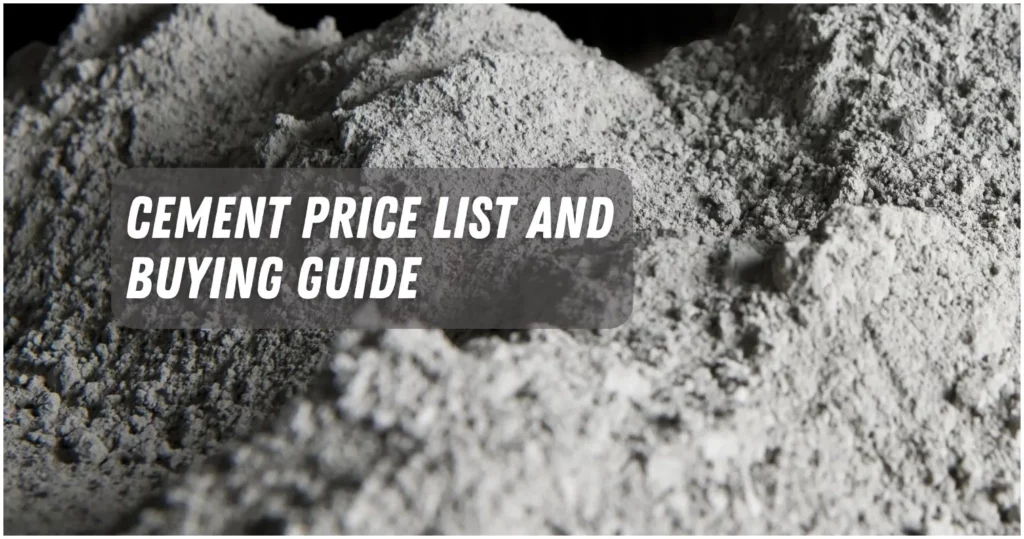If you are looking for GI pipe price in Philippines that range from ₱662 to ₱47,882, you have come to the right place.
In this article, we will discuss what is GI pipe, its uses, types, price list, advantages and disadvantages, and things you should know about it.
What is GI Pipe?
A galvanized iron pipe, or GI pipe, is a steel pipe that has a layer of zinc on it to stop rusting and rust.
It is often used in plumbing, water supply, and building projects because it lasts long and is cheap.
The zinc layer works as a barrier against damage, making the pipe last about 50 years longer.
Uses of GI Pipe
GI pipes are used in many different fields and businesses. Some of the most popular uses of GI pipes are:
- Plumbing: GI pipes bring water from where it comes from to faucets, showers, toilets, and other fixtures in homes and businesses. They also drain water from sinks, bathtubs, and toilets.
- Water Supply: GI pipes carry potable water from wells, reservoirs, or treatment plants to homes and companies. They also move water for irrigation, crops, and landscaping.
- Fire sprinkler systems use GI pipes to send water to sprinkler heads that are placed in ceilings or walls to put out fires in case of an emergency. They are made to handle high pressures and temperatures.
- GI pipes are also used for fences, scaffolding, cable conduits, handrails, furniture, and decorative items, among other things.
Type of GI Pipe
There are different kinds of GI pipes, and each has its own features. Here are a few examples:
1. Seamless

There are no splits or joints on the outside of these GI pipes. Even though they are more expensive, they are stronger and last longer.
2. Welded

Heat or pressure is used to join pieces of steel together to make these GI pipes. They are cheaper than seamless lines, but they aren’t as strong or last as long.
3. Schedule 40

The wall thickness of these GI pipes is normal with the size , which makes them both strong and affordable. They can handle more pressure than pipes with a small gauge.
4. Light Gauge

The walls of these GI pipes Class A aren’t as thick, which makes them lighter and cheaper. They can’t handle as much pressure as schedule 40 pipes.
5. Heavy Gauge

The walls of these GI pipes Class B are bigger, making them stronger and more durable. They can handle more force than schedule 40 pipes.
6. Extra Heavy Gauge

These GI pipes Class C have the biggest walls of any GI pipe type, so they can handle the most pressure.
If you know about the different types of GI pipes, you can pick the one that meets your needs in terms of strength, durability, pressure grade, and cost.
GI Pipe Price List
The price of GI pipe changes based on the type, size, grade, and coating of the pipe.
The price also relies on where the pipe is, who sells it, and how much is available.
Here is an example of a price list for GI pipe you can find in the Philippines:
| Size and Diameter | Price |
|---|---|
| 1/2″ (15mm) | ₱662 |
| 3/4″ (20mm) | ₱907 |
| 1″ (25mm) | ₱1,356 |
| 1-1/4″ (32mm) | ₱1,848 |
| 1-1/2″ (40mm) | ₱2,200 |
| 2″ (50mm) | ₱2,975 |
| 2-1/2″ (65mm) | ₱4,629 |
| 3″ (80mm) | ₱6,160 |
| 4″ (100mm) | ₱9,152 |
| 5″ (125mm) | ₱11,880 |
| 6″ (150mm) | ₱16,368 |
| 8″ (200mm) | ₱25,454 |
| 10″ (250mm) | ₱37,825 |
| 12″ (300mm) | ₱47,882 |
Advantages and Disadvantages of GI Pipe
When compared to other types of pipes, GI pipes have some pros and cons. Some good things about GI pipes are:
- The zinc coating makes them immune to corrosion and rust.
- They are strong and can last a long time if you take care of them.
- Using threaded fittings or flanges, they are easy to set up and join.
- They are inexpensive and come in a wide range of sizes and grades.
Some things that are bad about GI pipes are:
- They are big and heavy, so they need more room and support than other pipes.
- When they come into touch with different metals or chemicals, they tend to rust.
- They melt at a lower temperature than steel and can bend or break when heated or pressed hard.
- They have a rough surface that can slow water flow and cause friction.
Things You Should Know about GI Pipe
- What does a GI pipe do in a building? GI pipes are steel pipes with a zinc coating that are used to bring water into houses and keep the water from getting rusty.
- How thick is grade GI pipe? The width of round GI pipes ranges from 1.2 mm to 5.4 mm, and their outside diameters are between 21 mm and 325 mm.
- GI pipe or PVC pipe? uPVC pipes can handle both hot and cold water and last longer than GI pipes. They also have less growth of bacteria and algae than GI pipes.
- Can water go through GI pipe? GI lines were once used to bring water to homes, but they rust and break down over time when exposed to water.
- Does GI pipe rust? No, GI pipes don’t rust or corrode because they have a zinc covering that keeps them safe.
In the end, the price of GI pipes in the Philippines depends on their size, plan, and brand.
GI pipes are used a lot for plumbing, irrigation, drainage, and other tasks that need long-lasting lines that don’t rust.
GI pipes are also less expensive than other types of metal pipes, which makes them a popular choice among customers and contractors.
But GI pipes may also have some problems, like cracking and leaking if they aren’t taken care of properly.
Before you buy or install GI pipes, it is important to check their prices and quality standards on different price lists.
[ratings]

